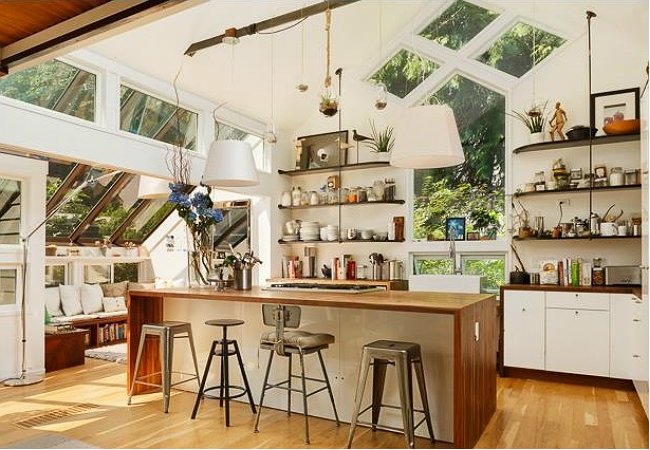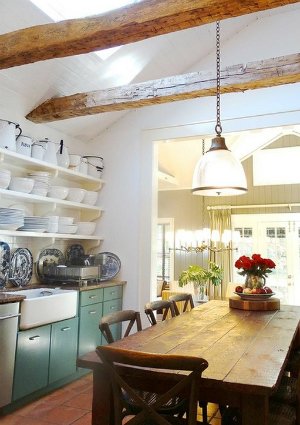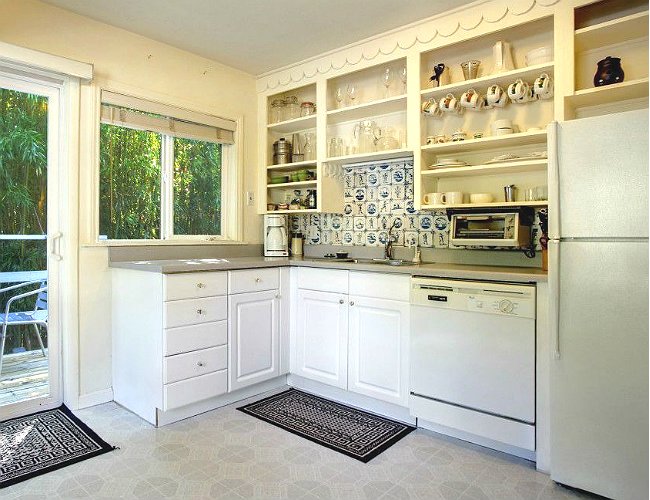The Do’s and Don’ts of Open Shelving
Before you opt for open shelving, consider these best practices for installation, upkeep, and styling that will help you make the most of this popular trend in kitchen design.

Photo: Zillow Digs home in Lake Oswego, OR
Open shelving provides a unique opportunity to showcase your dishware (and your personality) in the kitchen. You might believe that the storage and organization options it offers are as wide open as the shelves themselves—but the wrong move here could turn your rosy design dream into an unattractive, cluttered mess. Whether your kitchen already features open shelving or you’re considering a cabinet makeover, adhere to these best practices to make optimal use of your shelves.
DON’TStart Full
Just as you wouldn’t start a meal on a full stomach, don’t start out by just rearranging shelved items orstyling shelvesthat are already fully stocked. Clear off your work space by first removing all your possessions from the shelves. Once you have a clean slate, you’ll be able to implement a fresh, well-devised organizational scheme and refine the aesthetics of your shelf arrangement.

Photo: Zillow Digs home in Bridgehampton, NY
DOSecure Heavy Ceramics
If you intend to load up your open shelves with your entire ceramic dish collection, secure the shelves withwall anchorsto create the sturdiest foundation possible. Then, assemble your pieces into bottom-heavy arrangements, keeping the biggest ceramics on the lowest shelves and limiting stacks to eight or fewer pieces.
DON’TSet Yourself Up with Unreachable Arrangements
Now that you’ve removed the barriers that your cabinet doors imposed, all your kitchenware will seem more accessible. Don’t, however, let this apparent convenience tempt you to stow must-have necessities likefrequently used dishes、日常Corningware和香料集合on higher shelves. Instead, continue to place these essentials within arm’s reach, and reserve the higher shelves for decorative pieces and seldom-used dishes.
DOInstall a Range Hood
Think about the last time you opened a cabinet and the door or knob felt sticky to the touch. Grease, cooking fumes, and condensation from the stove are often deposited on kitchen surfaces. Without the protection of a wooden or glass door, open shelves can leave their contents vulnerable to stubborn n grimy buildup. Consider installing一个响了e hoodto siphon off unwanted heat, smoke, odors, and airborne grease before these particles end up on your possessions.
DON’TAlways Shelve Your Glass
Especially if you live in an earthquake-prone area, refrain from resting glassware on floating shelves—particularly at the upper reaches where these pieces are apt to come to an earth-shattering end. Consider instead lodging them in whatever closed cabinet spaces you have left, or aboard a wheeled bar cart. To further disaster-proof your shelving,install shelveswith a lip at the edge to keep any objects in motion from sliding—and falling—out.

Photo: Zillow Digs home in Seattle, WA
DOEmploy Variety
In your closed cabinetry, you may have grouped together similar cookware, glasses, and spices, but with open shelving it’s important not to forget that crucial spice of life: variety. Now that your storage contributes as much to the appearance of your kitchen as its function, create visual distinction on the shelves by mixing and matching different sizes and shapes of dishware, and throwing in the occasionalsplash of coloror decor.
DON’TForget to Bust Dust Early and Often
Critics of open shelving often cite these surfaces’ tendency to accumulatedustas their major downfall. But if you regularly cycle through your most-used dishware, you can ensure that your cookware will never sit long enough for the dust to settle. Wipe down the shelves themselves frequently to ensure that unwelcome dirt bites the dust.
DOTry It First
Before taking the plunge on an open shelving arrangement, give it a test run by temporarily removing existing cabinet doors. This is a great, no-cost change that provides a window into how your new shelves will look. If you don’t like the appearance—or if you learn that you just can’t keep your shelves organized enough for the new style—you can easily revert by putting the doors back on their hinges.






